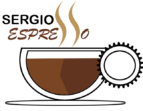Introduction
In the dynamic landscape of product management interviews, especially within the FAANG companies (Facebook, Amazon, Apple, Netflix, Google), candidates are often thrown curveball questions to test their critical thinking, innovation skill set, and their approach to problem-solving. Successfully navigating these questions can be a pivotal point in an aspirant’s career. The question at hand, “How would you leverage smartphone smelling technology?” is a classic example of how a candidate’s ingenuity and ability to utilize structured frameworks for crafting strong answers is assessed. Let’s delve into the valuable strategies to ace this product interview question.
Detailed Guide on Framework Application
Selecting a Framework
To effectively answer this question, we will employ the CIRCLES Method™, a popular framework introduced in ‘Decode and Conquer: Answers to Product Management Interviews.’ This framework ensures a comprehensive and structured response.
Step-by-Step Framework Application
The CIRCLES Method™ involves the following steps:
- Comprehend the situation
- Identify the customer
- Report the customer’s needs
- Cut through prioritization
- List out solutions
- Evaluate trade-offs
- Summarize your recommendations
Applying the CIRCLES Method™
Comprehend: To begin with, let’s clarify what smartphone smelling technology entails. It’s an emerging technology that uses sensors to detect and analyze chemical compounds in the air, much like a digital nose.
Identify: Potential customers could include people with disabilities, culinary enthusiasts, individuals interested in health and fitness, and professionals in industries such as environmental monitoring or food quality control.
Report: The identified customers have varying needs. Individuals with disabilities might rely on smelling technology for safety alerts or enhanced experiences, culinary enthusiasts for ingredient identification, health-conscious users for tracking food freshness or intake, and professionals for more accurate data collection.
Cut: Given the broad potential customer base, we would prioritize by the impact and feasibility. Smartphones are widely used, so incorporating technology for personal health and safety could provide immediate and widespread benefits.
List: Solutions could include an app for detecting allergens for allergy sufferers, a freshness tracker for those monitoring food intake, and an environmental alert system that detects pollutants or dangerous gases.
Evaluate: There are trade-offs to consider. For example, the allergen detector app must balance accuracy with a seamless user experience, while the environmental alert system needs to measure the right balance between the sensitivity of sensors and battery life.
Summarize: To leverage smartphone smelling technology, we would develop an app focused on personal health and safety, with key features catering to both allergy sufferers and health enthusiasts, ensuring a balance between accuracy, user experience, and battery usage.
Fact Checks and Approximations
It’s imperative to use known data points as reference in our assumptions. For instance, the prevalence of allergies in the general population is a fact we can use to estimate the potential market size. We can also reference existing sensor technology limitations when discussing feasibility.
Communication Tips during the Interview
Be clear and concise with your explanations, ensure you’re answering what’s being asked, and don’t be afraid to ask clarifying questions if you’re unsure. Engage with your interviewer by explaining your thought process transparently and with enthusiasm, showing your passion for innovation.
Conclusion
To stand out in a product management interview at a FAANG company, it’s crucial to be familiar with interview frameworks like the CIRCLES Method™. These frameworks not only help in creating detailed and structured responses but also demonstrate a candidate’s systematic approach to problem-solving and innovation. Remember the importance of practice in mastering these techniques, and make the most out of each mock interview or study session to refine your approach.
